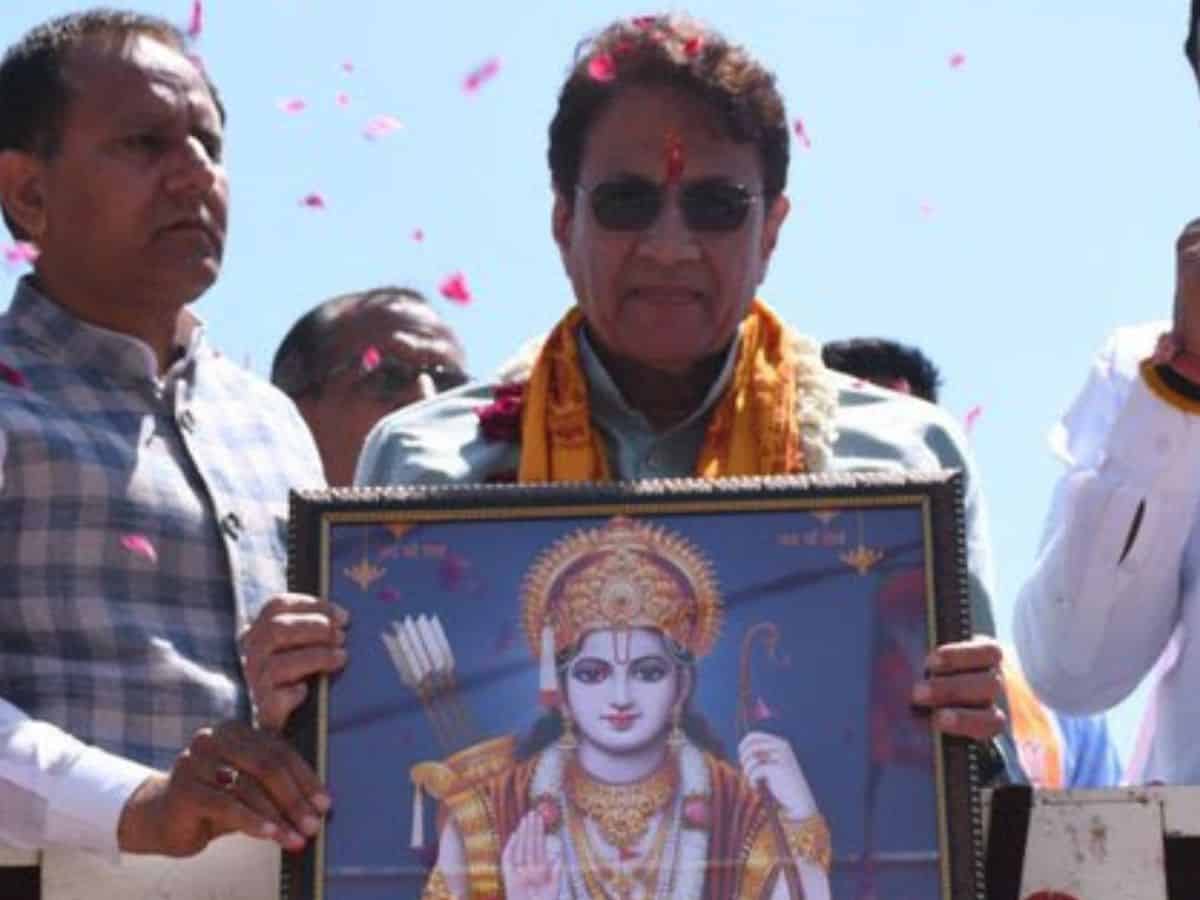
Arun Govil, the Bharatiya Janata Party’s (BJP) Lok Sabha candidate from Meerut, has stirred controversy by allegedly using religious symbols during his recent campaign for the 2024 Lok Sabha elections, despite the Model Code of Conduct (MCC) being in effect.
The veteran actor, renowned for his portrayal of Lord Ram in the iconic TV series Ramayan during the 1990s, conducted a roadshow in Meerut where he was spotted holding an image of Hindu diety Ram, a move that has drawn criticism and raised concerns over potential MCC violations.
Footage shared by Govil on his official social media account purportedly shows the actor addressing the crowd during the roadshow, urging them to vote for him as a symbol of their faith. In the video, Govil is seen proclaiming, “Meerut’s victory will be the victory of our faith. It will be your victory.”
Drawing parallels between his iconic portrayal of Lord Ram and his political aspirations, Govil is heard stating, “Ram ji returned home on January 22, who portrayed the character of Ram ji? That was me, Arun Govil, returning to my home. Now, it is the duty of the people here to show their faith in Ram ji.”
The video captures the enthusiastic response of the crowd, chanting slogans such as “Hum Ram ji ko jetaye ge” (we will make Ram ji win). Govil also purportedly urges the people to persuade those residing outside India to return home and vote for the BJP.
Despite the spirited support, Govil’s use of religious imagery during his political campaign has raised eyebrows, prompting scrutiny over potential MCC violations. As the election season intensifies, observers will be closely monitoring campaign activities to ensure compliance with electoral guidelines.
A call for action
Following the viral videos of the actor’s roadshow, critics on social media have raised concern over the use of religion for campaigning ahead of upcoming elections despite strict orders and guidelines of ECI.
“Actor Arun Govil is a politician, contesting on BJP ticket, the same party who shields Brijbhushan.He is literally going on road shows holding a picture of Lord Ram and asking votes in his name.What Strict action have you taken against Arun Govil?(sic)”, wrote one user.
Model Code of Conduct
The Election Commission of India (ECI) enforces the Model Code of Conduct (MCC), a set of regulations designed to govern the behaviour of political parties and candidates during elections. Implemented upon the announcement of the election schedule, the MCC remains in force until the conclusion of the polls.
The primary objective of the Code of Conduct is to uphold the integrity of elections by ensuring a fair and equitable environment for all political entities and candidates. It prohibits various activities, including:
- Making appeals for votes based on religious, caste, or community affiliations.
- Utilising government resources for election campaigning.
- Promising financial benefits or public welfare schemes.
- Engaging in acts of corruption or bribery.
- Employing defamatory or derogatory language against opponents.
- Using places of worship, such as mosques, churches, or temples, for election propaganda.
- Erecting posters or banners in restricted areas.
- Operating loudspeakers or other sound amplification devices beyond specified noise limits.
- Importantly, the ECI possesses the authority to impose temporary campaign bans on leaders found to have violated the MCC.
Particularly in Uttar Pradesh, the BJP has been charged with inciting religious nationalism and using religious chants to win over supporters.
The Hindutva policy of the party has come under fire for inflaming intercommunal strife and weakening India’s secularism pledge. These worries are heightened by the employment of religious symbols in political campaigns, such as the image of Lord Shree Ram in Govil’s campaign.

